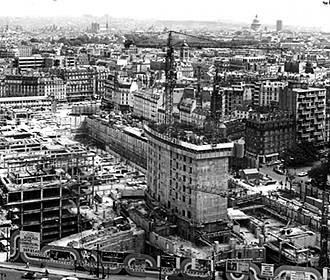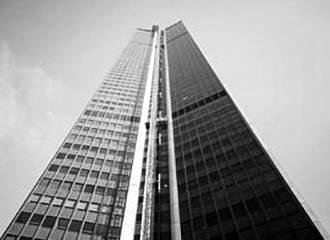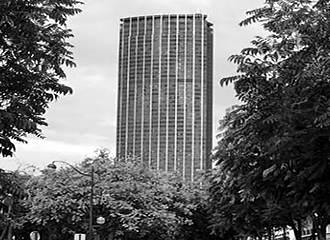History of Tour Montparnasse in Paris
The Tour Montparnasse Tower is the tallest skyscraper in Paris and takes its name from the area where it is situated and with its fabulous panoramic views over the city of lights and other landmarks like the Eiffel Tower, it has become one of the famous tourist attractions in Paris.
About the Montparnasse Area
Originally there was a rural hill in Paris called Mount Parnassus and the Montparnasse area of Paris takes its name from this, which is where it used to be referred to as a place for muses.
By the 18th century, shows and cabaret venues were cropping up along the Street de la Gaite, which at the time was beyond the city limits of Paris and therefore was exempt from taxes on alcohol, and it was not long before entrepreneurs were dreaming of making money from this type of clientele.
And so, music halls and theatres were starting to pop up in the Montparnasse area such as Bobino, along with cafes like Closerie des Lilas founded in 1804, La Rotonde that first opened at the start of the 1900s and then a few years later La Coupole, which are all still running today.
Right through the 1920s, the Montparnasse area of Paris was thriving and a place for writers, philosophers, artists, etc with many famous names that had visited or starred at the many different venues over the years including Edith Piaf, Ernest Hemingway, Oscar Wilde, Josephine Baker and many others.
But what with the Wall Street crash and the end of the roaring twenties, this area of Paris went into decline, yet by the 1930s the Gare Montparnasse train station was not meeting its needs and the French national rail company were contemplating other alternatives for the future.
And after 25 years a reconstruction project with a large scale urban redevelopment program was put in place when the new Paris traffic plan was adopted so that the train station could be moved and the original area of land could then be utilised for new buildings and purposes.
In 1956 the renovations of the Montparnasse area started and at that time the project covered an area of around 8 hectares and many old dilapidated buildings were completely destroyed as they were deemed unfit for habitation.
The Tour Montparnasse in Paris
It was in 1959 that the first studies were conducted for the Tour Montparnasse Tower, but at the time these were met with disapproval and were severely criticised because of its proposed height and structure, with many saying that it would destroy the historical Paris landscape.
However, a project for the Montparnasse Tower was devised from the June of 1966 that brought together four architects by the names of Urbain Cassan, Eugene Beaudouin, Louis de Hoym de Marlen and Jean Saubot. And in 1969 the French President, Georges Pompidou approved the construction of the tower, as he already had great visions of modernising the capital city of France.
420,000 metres cubed of rubble had to be removed from the site chosen and due to urban planning, the tower would also be constructed over the Metro and several underground lines, which meant that the underground system would have to be protected by a reinforced concrete shell.
Located in the 15th Arrondissement of Paris the first stone was laid in the April of 1970 and this landmark in Paris was inaugurated in 1973 with an official name of Tour Maine-Montparnasse and with a shopping centre at its base, numerous offices and the fabulous viewing areas.
This tower was then an addition to the axis that runs from the Palais de Chaillot through the Trocadero Gardens, over the River Seine to the Eiffel Tower, then on to the Champs des Mars and the impressive Ecole Militaire.
However, even with its benefits and its location the Tour Montparnasse still met with a lot of disapproval and it has become the only true skyscraper in Paris, as it was agreed that there would be no other buildings constructed within the city this high, so as to not spoil the landscape, character and history of Paris.
Transport options
Paris Metro lines 4, 6, 12, 13
Bus line 28
Bus line 58
Bus lines 82, 89
Bus lines 91, 92, 94, 95, 96
Night bus lines N01, N02
Night bus lines N12, N13
Night bus lines N61, N62, N63
Night bus line N145
Gare Montparnasse


